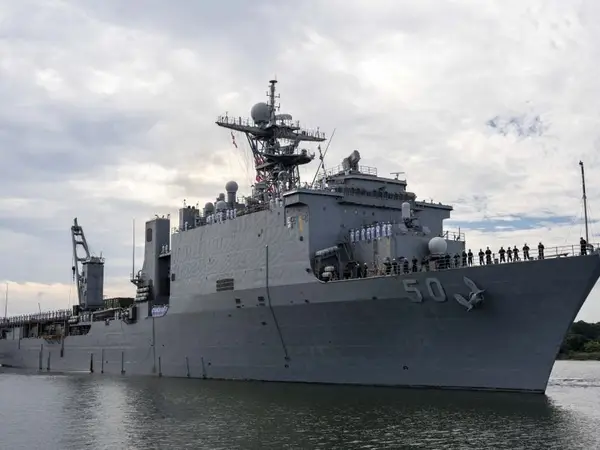Iran unveiled a series of what it called new maritime weapons this week as Washington appeared to be increasing pressure on Tehran on at least two fronts.
In its boldest move to deter Iran since assuming office, the Biden administration signaled on Wednesday that it may soon offer to put armed sailors and Marines on commercial ships traveling through the Strait of Hormuz.
The Pentagon last month had already sent additional F-35 and F-16 fighter jets along with a warship to the Middle East in a bid to monitor key waterways in the region following Iran's seizure and harassment of commercial vessels.
The Islamic Revolutionary Guard (IRGC) held drills around three Iranian islands in the Persian Gulf contested by the United Arab Emirates and claimed that it has added a 600-kilometer-range new missile to its arsenal “for defending the islands’ territory.”
Hossein Salami the commander of the IRGC delivered another speech on Saturday, praising what he called unprecedented advances the Islamic Republic ha made in naval power. In typical veiled language Salami said that “the enemy’s presence instead of posing a threat became an opportunity…and we expanded our defense and military” capabilities.
Salami also stated that Iran has been able to de-couple “the enemy’s military power” from its psychological dimension, implying that Tehran is not afraid of the overwhelming power wielded by the United States.
By offering to protect commercial vessels, the United States may be trying to prevent what it anticipates as inevitable Iranian escalation amid a lack of an agreement on Iran’s nuclear program and continuing US sanctions that have led to a hopeless economic situation for Tehran. But the show of force could also be apart of Washington’s efforts to re-engage in the Middle East to show Saudi Arabia and its allies in the Persian Gulf that it is the ultimate guarantor of security.
Vice Admiral Brad Cooper met met with Gulf Cooperation Council Secretary General, Jasem Mohamed Al Budaiwi, in Riyadh to discuss “maritime collaboration for ensuring the free flow of global commerce in & near critical regional waterways,” US Naval Forces Central Command announced Thursday.
Already, the US Navy is authorized to defend vessels belonging to countries with whom there is a mutual defense agreement, including Saudi Arabia and its Persian Gulf allies. However, Al-Monitor cited US officials as saying that the Pentagon has been discussing options with the National Security Council to expand maritime commercial defense “potentially including ownership of the ship or its cargo.”
As the Biden administration appears to be adopting a more forceful posture in the Persian Gulf, it is also ramping up pressure on Tehran over the issue of Iranian drone supplies to Russia.
NBC news reported Friday that the Defense Intelligence Agency (DIA) has decided to show foreign officials “undeniable” evidence of the Iranian origin of drones shout down over Ukraine.
Washington first warned about Tehran’s plan to supply attack drones to Russia in July 2022 and in October it announced that indeed Moscow had started to use Shahed kamikaze drones against Ukraine. In February the DIA issued a report saying that analysis confirmed Russia’s use of various lethal Iranian unmanned aerial vehicles (UAVs) against Ukraine.
Iran has retaliated in recent days by calling for a halt to Western arms supplies for Ukraine blaming the assistance for prolonging the war.
Iran has long been an ally of Russia both in the Syrian civil war and during the invasion of Ukraine despite its claims of neutrality. The government media in Tehran has displayed clear support for Russia and officials have never condemned Moscow's attacks on civilians. So far, Russia has used hundreds of Iranian-made drones against Ukrainian civilian and infrastructure targets.
